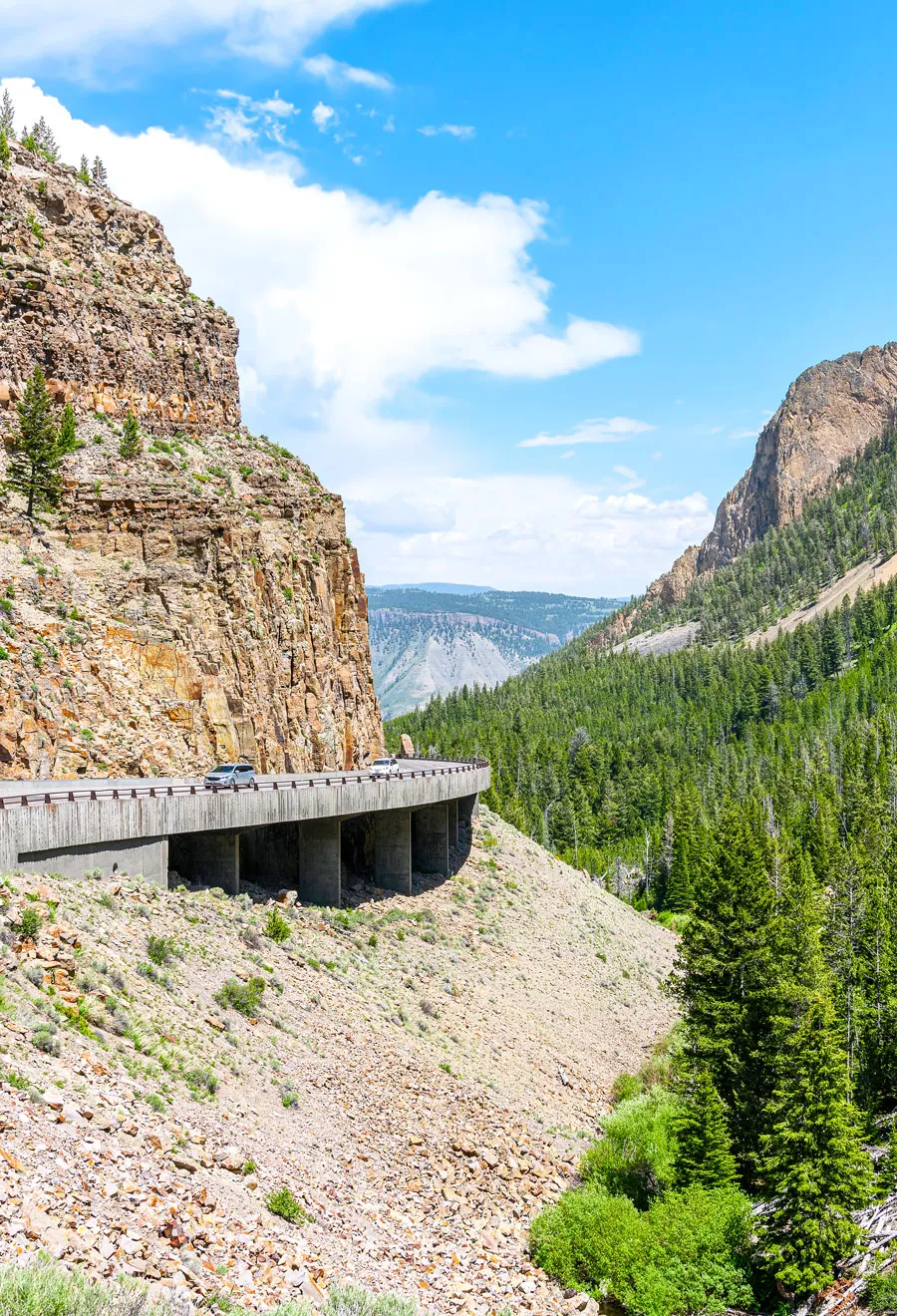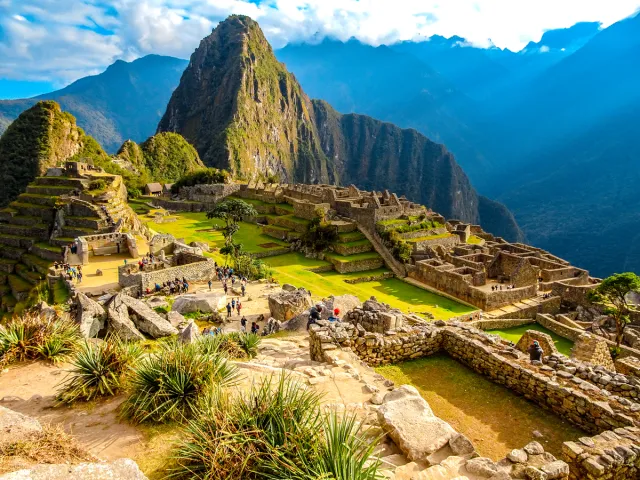America’s 63 national parks were established to preserve the country’s most remarkable landscapes and ecosystems — as well as to provide spaces for people to connect with nature. And connect people they do: More than 300 million people visit national parks each year for hiking, sightseeing, camping, and some of the most scenic drives in the country. From mountain ranges and homesteads in the American West to craggy coastlines and unbeatable foliage in the East, here are 10 of the most beautiful national park drives in the U.S.
Trail Ridge Road – Rocky Mountain National Park, Colorado

Climbing to 12,183 feet at its summit, Trail Ridge Road is the highest continuous paved road in the United States — and one of the most unforgettable ways to experience the Rockies. The 48-mile stretch connects Estes Park to Grand Lake, rising quickly above the tree line along continuous curves that offer panoramic mountain vistas. On clear days, you can see for hundreds of miles across the jagged peaks and ancient glacial valleys.
Wildlife sightings are also common here, with elk, bighorn sheep, and marmots making regular appearances along the way. Several pullouts and short trails, including the Alpine Ridge Trail near the visitor center, allow for a break from your car and an even closer look at the park’s unique high-altitude ecosystem. Be sure to dress in layers — even in summer, the temperature up top can be 20 to 30 degrees Fahrenheit cooler than in the valleys below. As winter transitions into spring and early summer, you might also encounter some icy roadways at higher elevations.
Rim Drive – Crater Lake National Park, Oregon
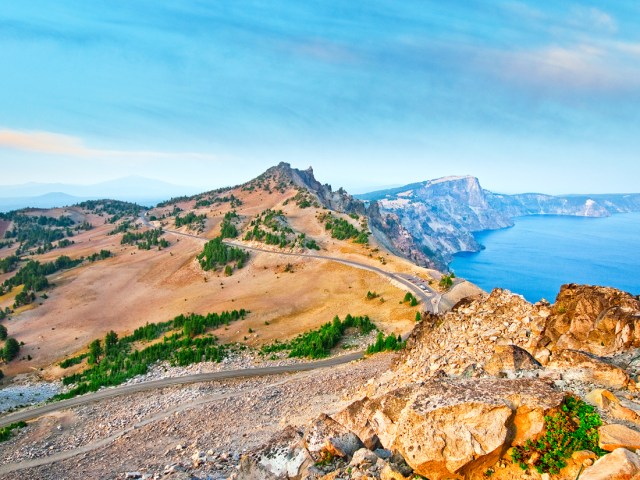
Crater Lake National Park’s 33-mile Rim Drive encircles a caldera that was formed over 7,700 years ago. When the volcano erupted and collapsed, it resulted in a crater that became the deepest lake in the U.S. and the seventh-deepest in the world.
The Rim Drive offers wide-open vistas of the lake’s deep blue waters and surrounding mountains, including the park’s two highest peaks, Mount Scott and Hillman Peak. Visitors can pull over at 30 designated lookouts that were designed to highlight specific views. These include distinct geologic formations, like the Wizard Island cinder cone, or the region’s subalpine meadows, some of which bloom in bright red fleece flowers in the short summer season. The high altitude makes this one of the snowiest places in the inhabited U.S., so it’s best to check park conditions for frequent road closures before planning your trip.
Cathedral Valley Loop Drive – Capitol Reef National Park, Utah

Remote, rugged, and at times otherworldly, the Cathedral Valley Loop Drive is one of Capitol Reef National Park’s best-kept secrets. This 58-mile unpaved loop showcases some of the park’s most striking rock formations, including the Temple of the Sun and Temple of the Moon — towering red sandstone monoliths that seem to rise straight from the flat, dry desert floor.
Because of the rough road conditions and a foot-deep drive through the Fremont River, a high-clearance vehicle is recommended. If you have one or can rent one — check out several nearby truck rental spots if needed — you’ll take in colorful Bentonite Hills badlands, a giant gypsum sinkhole, and vast, crowd-free panoramas that feel almost alien in scale.
Park Loop Road – Acadia National Park, Maine
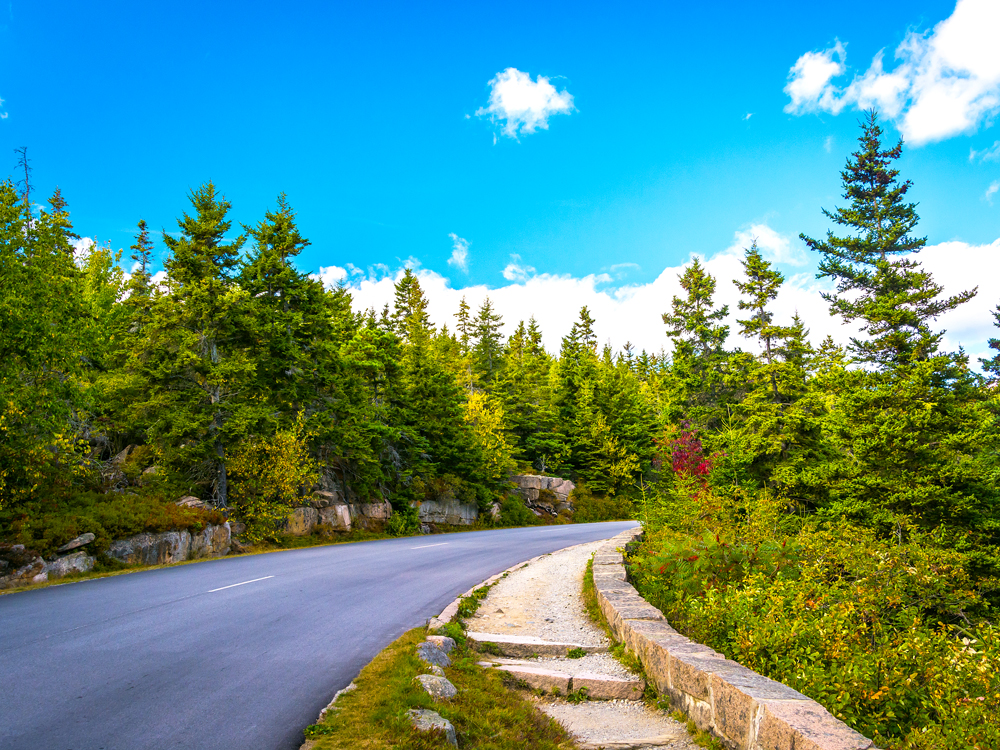
Acadia National Park’s rustic carriage road system — built in the early 1900s by John D. Rockefeller Jr. — may offer a more intimate experience of the park, but driving Park Loop Road highlights many of its most stunning sights. Starting near Hulls Cove Visitor Center, the 27-mile road travels through some of Maine’s trademark natural features. Drive through spruce and fir trees, set against dramatic granite cliffs, and alongside rugged Atlantic coastline, home to must-sees such as Thunder Hole — where the changing tide and surging waters create an unforgettable natural roar.
The route also offers easy access to plenty of hiking trailheads and passes by beautiful Sand Beach, where the sands are warm and the water is beautiful but cold. It’s also easy to reach the summit of Cadillac Mountain from the Park Loop. This marks the highest point on the U.S. Eastern Seaboard, and visitors often flock here to witness America’s first sunrise of the day from October 7 until March 6.
Desert View Drive – Grand Canyon National Park, Arizona
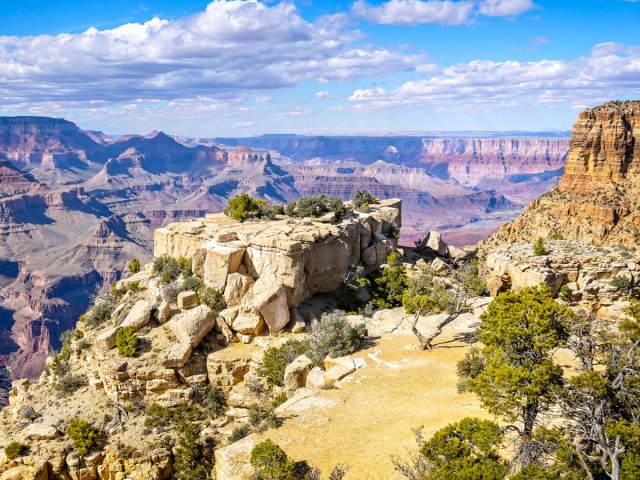
While Grand Canyon Village hosts a bulk of the park’s South Rim traffic, Desert View Drive offers a more contemplative, but no less stunning way to experience the canyon’s natural wonders. Stretching 23 miles along the South Rim, from the village to the park’s east entrance, this drive offers picnic spots and other lookouts where you can take your time gazing at the canyon’s layered geological history.
Navajo Point, at more than 7,400 feet, is the highest overlook on the South Rim. It offers views not only of the Colorado River but also of the famous colorful Painted Desert stretching beyond the park’s borders. Lipan Point is a favorite for sunsets, with its orange hues and dramatic shadows, and at the road’s eastern end, hop out of the car for your best views of the mighty Colorado River from the Desert View lookout. (That’s not to be confused with the 70-foot Desert View Watchtower, designed in 1932 by architect Mary Colter, which offers 360-degree views and features murals by Hopi artist Fred Kabotie.)
Tioga Road – Yosemite National Park, California
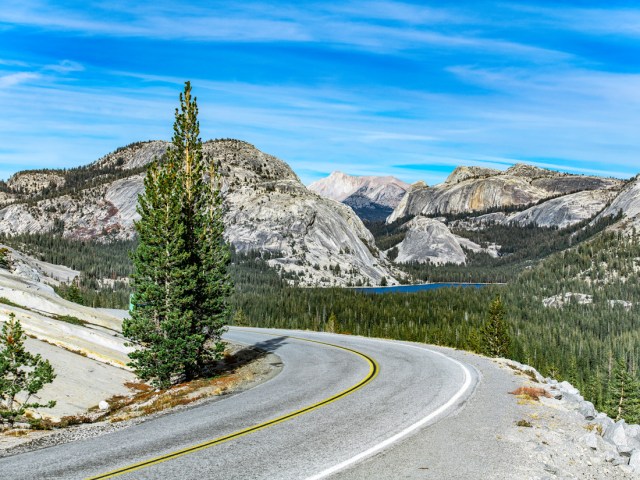
Closed for much of the year due to snow, Tioga Road is a scenic wonderland in the short few summer months that it’s open. The 46-mile drive offers breathtaking views of Yosemite’s dynamic topography at almost every turn. It winds from the Crane Flat campground to Tioga Pass, the highest highway pass through the Sierra Nevada mountains — and in all of California — at an elevation of 9,943 feet. The high altitude offers a unique perspective of the park’s beauty, with panoramic views of monstrous cliffs, lush valleys, waterfalls, and pristine lakes.
Make sure to stop at Olmsted Point, famous for its view of the iconic Half Dome (and, often, its adventurous climbers). The Tuolumne Meadows, a vast subalpine area surrounded by dense evergreens and granite domes and peaks, are another highlight. During the peak summer months, the meadows come especially alive with wildflowers, providing a colorful pop against the stark rocky backdrop.
Scenic Loop Drive – Theodore Roosevelt National Park, North Dakota
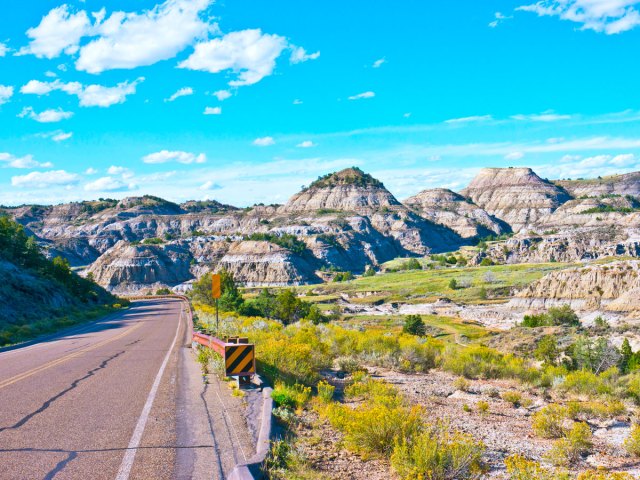
The 36-mile Scenic Loop Drive in the South Unit of Theodore Roosevelt National Park winds through the landscapes that helped inspire the 26th president’s lifelong dedication to conservation. The road cuts through colorful badlands, prairie dog towns, and wide-open grasslands where bison, elk, and wild horses descended from the ranch stock of the past roam freely.
Marked overlooks, such as Buck Hill and Wind Canyon, provide excellent views of the continuously eroding hills and the Little Missouri River valley. The loop also passes through the Coal Vein Trail, where a 1951 lightning strike sparked a fire that smoldered underground for 26 years, heating the surface and baking rocks into a hard, red substance known as clinker.
Grand Loop Road – Yellowstone National Park, Wyoming, Montana, and Idaho
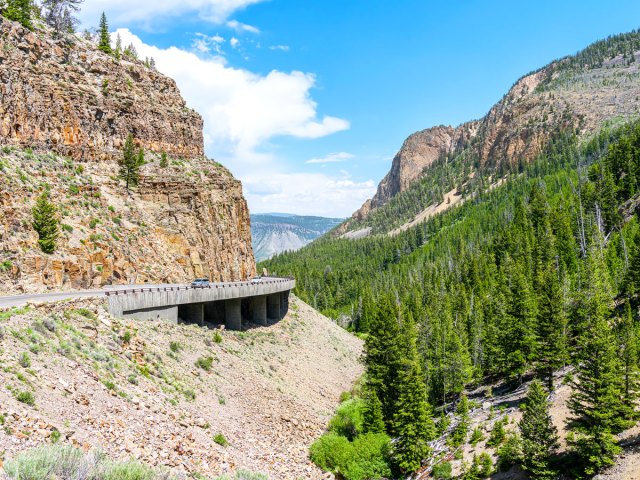
Yellowstone’s Grand Loop Road isn’t just a scenic drive — it serves as the backbone of the entire park. Visitors can join the 142-mile, figure-eight-shaped route from any of the park’s five entrances. It connects nearly all of Yellowstone’s major attractions. Follow it clockwise or counterclockwise; either way, it will lead you to must-see highlights such as Old Faithful, the Grand Prismatic Spring, the Grand Canyon of Yellowstone, and Hayden and Lamar valleys (the latter of which are often called the American Serengeti for their abundance of bison, bears, eagles, and elk).
Because the loop covers so much ground, it’s best tackled over a few days, with plenty of stops to explore on foot. Summer is peak season, but early fall is worth considering for fewer crowds and pops of golden foliage. Just be sure to make it there before November 1, as most of the Grand Loop Road closes for winter. The exception is the section between the north and northeast entrances, which remains open year-round.
Ross Maxwell Scenic Drive – Big Bend National Park, Texas
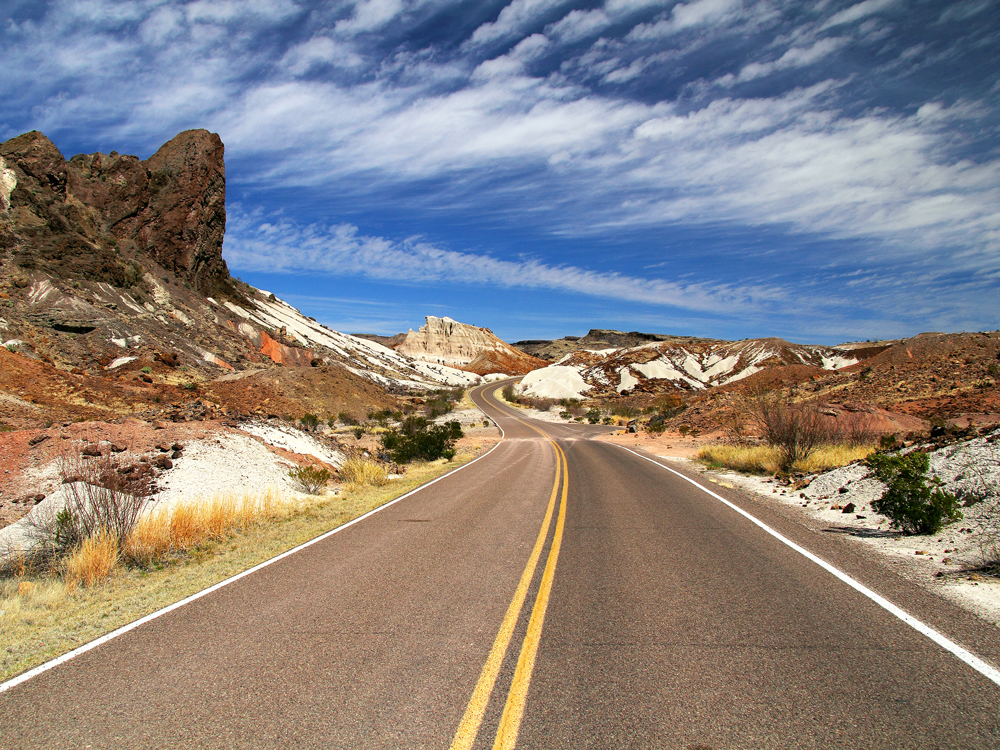
The Ross Maxwell Scenic Drive, named for Big Bend’s first superintendent, reveals the rugged beauty and historical significance of this Texas park’s western region. The 30-mile route weaves through some of the Lone Star State’s most iconic natural features: arid badlands, towering volcanic formations, and impressive canyons along the Rio Grande, seen from several lookouts along the way.
The Sotol Vista Overlook is a must-stop on the drive. Here, you’ll be rewarded with an unparalleled view of the mighty Santa Elena Canyon and a horizon that stretches into Mexico. The historic Sam Nail Ranch, a remnant of bygone homesteading days, is another popular attraction thanks to its iconic windmill. And the Cerro Castellan butte, perched at over 3,200 feet above sea level, stands tall as an unforgettable highlight on this drive — especially when surrounded by blooming bluebonnets and bathed in burning red from the setting sun.
Scenic Drive Loop – Grand Teton National Park, Wyoming

It’s not often found on official national park driving maps, but the 42-mile Scenic Drive Loop promises breathtaking views of the towering Tetons — some of the oldest rocks in North America. This incredibly scenic drive also boasts sweeping plains, unspoiled glacial lakes, historical homesteads, and up-close views of wildlife. A must-see is the Snake River Overlook. In 1942, Ansel Adams immortalized this winding river set against the iconic Teton Range on film, and today, many years of greenery growth have updated the view for your own photographic keepsake.
The loop also includes a stop at the historic Mormon Row, where the well-preserved Moulton Barns offer a glimpse into the area’s frontier history. Further along, the Signal Mountain Summit Road offers a short detour to a lookout with sweeping views of Jackson Hole and Jackson Lake. This is one of the longest detours along the way — approximately 5 miles each way from the main loop road — but it’s worth the extra time. Along the drive, it’s also possible to spot some of the wide variety of animals that call the park home, from bears to pronghorn, moose, elk, and bald eagles. Wildlife is most active at dawn and dusk, but you could get lucky and spot some during a midday drive.
More from our network
Daily Passport is part of Inbox Studio, which publishes content that uplifts, informs, and inspires.






